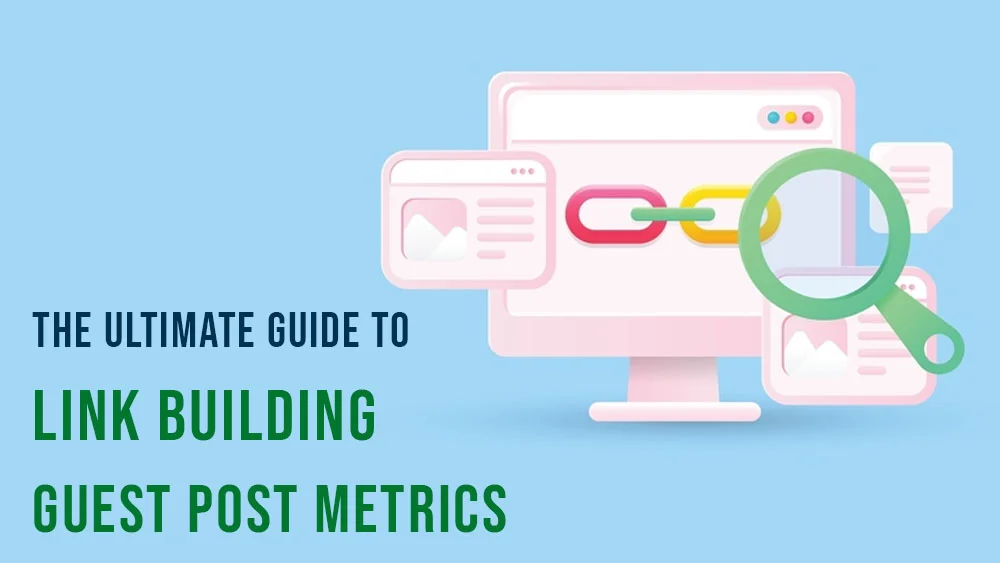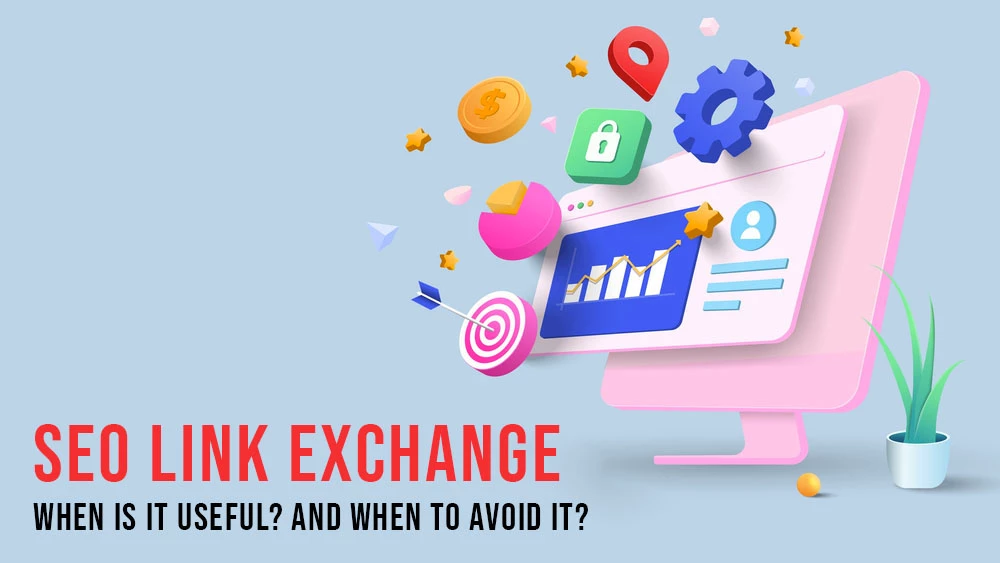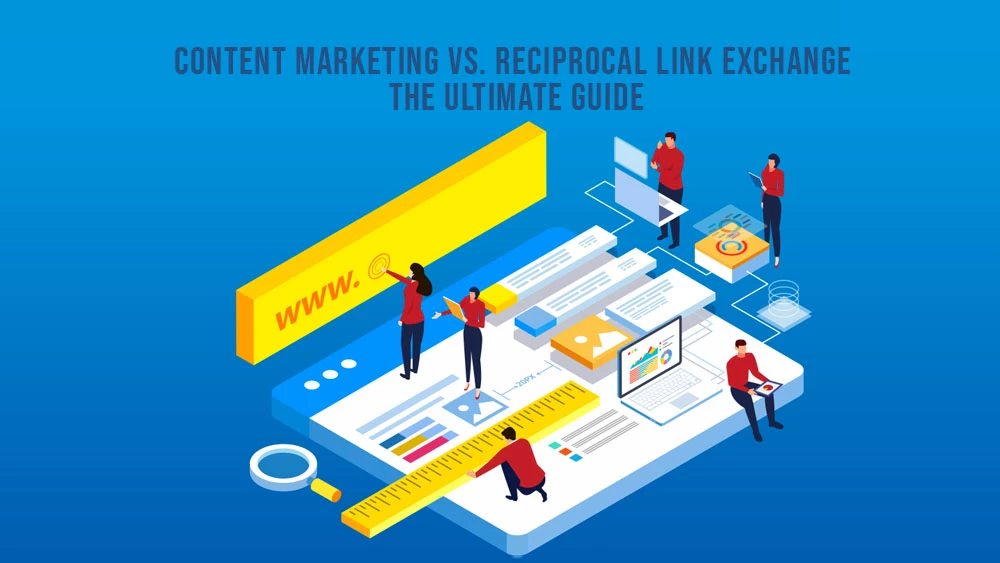Link Building Metrics: Unlocking the Potential of Your Website
A website can sometimes be a business’s or brand’s greatest opportunity. Billions of people now use the internet on a daily basis for various reasons. This, in turn, increases a business’s chance to be visible and do better. However, in order to achieve this, you have to go through an extensive process of optimizing your website’s SEO and training. Doing so can be a bit difficult. However, there are many ways and techniques, like link building and guest post, that make achieving this easier. In this article, we will emphasize one of the most important SEO techniques, which is link building. We will also demonstrate some of the vital link-building metrics that you should keep an eye on.
What is Link Building
SEO is a very broad term that is only getting bigger and more inclusive over time. The process of optimizing SEO also got more advanced as more tools and technologies emerged. However, there are some concepts and techniques that have been here from the very beginning and are only getting more significant. Among these approaches and techniques is link-building. Link building is the process of collaborating with other websites in the same or related fields of expertise to link to your website or even a specific page of your website.
In the e-commerce field, for instance, link building is very common and is the main technique for improving one’s website. What businesses usually do is agree to refer to each other’s products in articles, blog posts, and any other content included on the website. This process is called link exchanging and is part of link building. These referring links are called backlinks and are very important in determining how your website is actually performing.
Link building is done in one of two ways. Either by suggesting that you guest post on another website and include your link with the content. Or by the website doing the whole process from their end. Either way, you have to choose wisely the link you are going to refer to. It is important that it has valuable content that users can find attractive and relate to.
How Does Link Building Impact Your Website
Link building, in whatever shape it may take—guest posts or not—has been shown to be extraordinarily effective. The results of this procedure have had positive implications. In order for you to have a comprehensive understanding of the benefits that link building can provide, we are going to provide some examples of those benefits.
Improved Rankings on Search Engines
Building high-quality backlinks is crucial to the success of any search engine optimization campaign because it raises a website’s page rank. When other credible and reputable websites link to yours, it provides an indication of authenticity and authority to search engines like Google. If you do this, your website may rise in the search engine rankings and receive more traffic.
Build a Strong Brand Image
To strengthen your brand’s reputation, link building is a very useful technique. By including a link to your website, other websites are effectively promoting your brand and confirming its trustworthiness. There is a great relationship between establishing your brand, enhanced brand awareness, and consumer loyalty, all of which can be accomplished through link building. Link building also helps you get your brand in front of more customers, which in turn can lead to more customers and more revenue.
Give the Website More Credibility
Successful search engine optimization relies heavily on link building to boost a site’s authority. Usually, high-quality backlinks lead to search engines giving greater weight to the content you provide. Because of this, your site’s search engine rankings may improve, bringing in more traffic and potential customers. You may boost your website’s credibility and authority in your field and attract more visitors by gaining links from reputable sites.
Increase Sales Opportunities
Link building can also help you make additional sales. When your site’s traffic increases due to references from trustworthy websites. This makes more customers who get interested in the brand or content walk through the door. A majority of these people might eventually turn into regular and loyal customers. When people view your website as an authoritative source in your field, it builds credibility and encourages customers to take action. Your search engine optimization (SEO) and potential for making sales can both significantly improve with an emphasis on link building.
Top Link Building Metrics You Need to Keep an Eye On
Link building is a rich element and SEO concept. As well as a great factor that Google takes into consideration when ranking websites on search engine result pages. That is why, SEO specialists have established some guidelines and specific scales by which one can measure the impact of the backlinks he is building to ensure the business’s success. These scales, or, to be more precise, metrics, are any website owner’s or developer’s main priority. They need to keep a close eye on them to be able to immediately address any problems and assess their overall performance. Without further ado, here are the most important six link-building metrics that you might need to know.
Domain Authority
Domain authority should always be at the top of the list when introducing important link-building metrics. The domain authority score is a scale created by the most popular and influential SEO firm ever, MOZ. This core was established to give people a more thorough look into how their websites are performing. The domain authority score shows the overall performance of the website and how it is doing on all SERPs. It takes the form of a 1 to 100 scale. With 1 being the least performing, and 100 being the top performing. One of the main factors that always influence the score of domain authority is link building, link exchange, and guest posting, which makes it a very important metric.
Page Rank
Page rank is another important factor that you need to keep an eye on very closely. It is a metric established by Google, which makes it a vital ranking factor. This metric measures the importance and relevance of a webpage. It has a scale from 0 to 1, with 0 being low-ranking or low-quality pages and 1 being high-quality and high-ranking pages.
It is determined by the quantity and quality of the backlinks that point to the page. When a page has a higher page rank, it has a better chance of ranking highly in the search engine results pages (SERPs). It is essential to monitor the page rank of the websites that link to yours in order to ensure that the links you are receiving are of a high enough quality to have a beneficial effect on your rank within the search engine results pages.
Anchor Text
Anchor text is the visible part of a hyperlink that can be clicked on. The anchor text should be descriptive of the linked page’s content and relevant to the topic at hand. This not only clarifies the destination for the user but also tells search engines what the page is about. Monitor the anchor text of backlinks to your site to ensure you attract a wide variety of potential customers.
Number of Links
The number of links is pretty self-explanatory. It is a metric that calculates the number of links referring to your website. A good indicator of your website’s success is always the number of external websites that refer to it. When establishing backlinks, quality is as essential as quantity. Instead of aiming for as many links as possible, concentrate on building high-quality links from reputable websites in your field. To make sure your link-building efforts are fruitful, you should monitor not only the total number of links leading to your site but also indicators like domain authority.
Cost Per Link
Cost per link is a metric used to determine the price of acquiring a single link. This metric is essential because it allows you to calculate the return on investment of your link-building efforts. To determine the cost per link for your link-building strategy, divide the total cost by the number of links acquired. Keep in mind that the value of a link can vary depending on the quality of the website it’s coming from, so it’s important to focus on building high-quality links as opposed to simply acquiring a large number of low-quality links.
Toxicity Score
The toxicity score is a metric that evaluates the toxicity of the links that point to your website. Toxic links can harm the search engine rankings and reputation of a website. A high toxicity score indicates that your website contains an abundance of toxic links, which can result in penalties from search engines, or, even worse, getting banned. To improve your website’s overall link profile, it is essential to routinely monitor your website’s toxicity score and remove any toxic links. Tools such as Moz’s Link Explorer and Ahrefs can help you analyze the toxicity score of your website.
Final Thoughts
When it comes to search engine optimization (SEO), link building is still one of the most important tactics for generating authority, organic traffic, and visibility. Therefore, it is crucial to measure the key metrics in order to fully unleash the potential of link building.
In this post, we have discussed some of the most important link-building and guest post metrics that can help you assess the success of your efforts. You may assess the real outcomes of your link-building efforts by monitoring metrics like anchor text, cost per link, and page rank.
As you continue your link-building journey, consider leveraging the power of LinkExchange.AI. This innovative platform is designed to streamline the process of finding and exchanging links with other relevant websites in your field. LinkExchange.AI utilizes advanced algorithms to identify ideal matches, saving you time and effort in your link-building process.
Start maximizing the potential of your link-building efforts today by signing up for LinkExchange.AI completely for free! Take advantage of this powerful platform to find relevant and high-quality websites for link-building exchange and guest posts, boosting your website’s visibility and authority.











